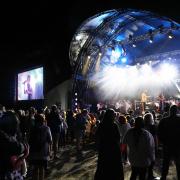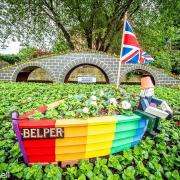Simon Turton talks to the Peak District-based Nick Beecroft operations director of Sheffield architects HLM about how they’ve ‘weathered the storm’ of recession
For anyone running a business the last few years have been something of a challenge. The global downturn that started in the USA wreaked havoc across the UK economy, the nadir of which was recorded in the fourth quarter of 2008 when the economy contracted by 2.1% or, as the economists prefer, 2.1% of negative growth.
However the UK’s gross domestic product (GDP) figures are reported, the country still has a fair way to go before we get back to the dizzying heights of a booming economy that in the first quarter of 2008 was worth over £393bn. When compared to GDP figures of £382bn for Q3 of 2013, it is easy to see why people are still feeling the pinch.
Part of the reason why the recession has been so prolonged and why the recovery remains so fragile is because the banks stopped lending. Now in early 2014 the banks remain nervous about even lending to companies that have a full order book or are otherwise trading well.
Whilst most companies have been affected by the recession to a greater or lesser degree, those involved in the building trade suffered particularly badly. Whether it was abandoned housing schemes, government infrastructure programmes scrapped or commercial projects having their funding pulled, the impact has been enormous and not least on the design and architecture sector – often the first to feel the chill wind of recession.
One of the local companies that has pulled through the recession virtually unscathed is Sheffield-based architects, HLM. The £10m turn-over company – employing over 100 staff across eight offices (two of which are overseas) – celebrates its 50th anniversary this year. That the company survived the last six years is testimony to the business acumen of the board of directors, which includes operations director, Nick Beecroft, who has been with the company since the mid-80s.
When I met Nick Beecroft at HLM’s headquarters in Sheffield, which overlook the Crucible and the Lyceum Theatre, I asked how HLM had been able to steer through the proverbial storm. Nick replied: ‘Many architects are very creative and deliver great schemes but fall down on managing the business, which means that they can leave their company exposed if they don’t maintain a grip on their finances. At HLM our ethos has always been to be great at design, but equally focused on the financial side of things.’
As Nick is one of the longest-serving members of HLM, initially an employee and since 2004 an equity partner, I was interested to find out how his career had unfolded: to what extent was his career planned or had it been the result of chance?
‘I had always been interested in design, which is why I started working for an architects practice in Sheffield – long since gone. I hadn’t been there long when I saw an advert for a technologist at Hassall Homes. I got the job and literally started at the bottom, but that experience of having been involved in almost every aspect of designing and building houses has been extremely useful. I had planned to go back to university full time but things were going well. I was earning a reasonable salary and my prospects were good. I decided to combine my working life whilst furthering my education.’
During Nick’s time at Hassall Homes, Chris Liddle (the current chairman of HLM) joined the company and the two became good friends. It wasn’t long before Chris left to open the Sheffield office of architects Hutchison, Locke and Monk, and soon after asked Nick to join him. Nick accepted the offer and over the next few years Chris and Nick worked hard to build up the Sheffield office. At that stage HLM, as it later became known, already had offices in Glasgow and Richmond-upon-Thames. After Sheffield, other offices followed in Belfast, Guildford, Cardiff and Plymouth, while the South African and Abu Dhabi premises were more recent additions.
While the company has grown year-on-year, HLM has not been without its share of challenges and problems. In the late 1990s an American company of architects, coincidentally called HLM, bought the company. But following the attack on the Twin Towers in 2001 HLM (USA) went into rapid decline and by 2004 had filed for bankruptcy.
By this time the UK division of HLM was performing well, with a solid client base with a growing order book. When the US company went into administration the UK’s board of directors took the decision to buy the company from the receivers and Nick became one of 10 equity directors.
‘Had it not been for the US company failing I don’t know how things would have gone forward, but buying the company has been one of the best things that we did as a group of directors and that I did personally. Of course, the moment you become an owner the entire proposition changes: suddenly not only are you legally responsible for the future of the business but you have employees who depend on its on-going success.’
With the risks came the rewards, and following the buy-out Nick and his fellow directors enjoyed making hay as the economic sun shone. Business was good, turnover increased and fortunately HLM did look after the roof when the sun shone. In 2008 the storm of all storms followed, as Nick explained: ‘Unfortunately, we did have to make some of our people redundant. In order to survive we had to batten down the hatches and take action, rather than sit back and hope that things would get better of their own accord. I know that had we not taken those difficult decisions we could well have followed other companies into oblivion.’
The strategy of HLM’s attention to detail, financially and aesthetically, has clearly paid off and today the company is in a good position to take advantage of the economy as it continues its growth trajectory. New members of staff are being recruited and there’s a palpable buzz of activity in the Sheffield office.
Nick Beecroft is clearly proud to be part of a successful and dynamic company that operates not only across the UK but also overseas. After almost 30 years with the company he is still involved in every stage of the architectural process from business development, briefing, design and construction. He is also responsible for the day-to-day and strategic operations of HLM’s offices, with particular responsibility for staff development, CPD, BIM management, marketing, appointment and services documentation.
With so much on his shoulders I wanted to know how he keeps all the plates spinning, especially with having a young family, dogs and chickens. How does he see things in terms of work-life balance?
‘I don’t necessarily agree with the modern analysis of work-life balance, because I think I have always balanced the two. When I am not at work I am actively at home with my wife, Helen, and children, Maddie and Jonathan, and two energetic pointers. Yes, of course I look at the phone when a message comes in, but equally I do switch off when I arrive back home. Keeping fit is really important to me and I feel privileged to be living in rural Derbyshire. It means that I can be in the hills in minutes and there are plenty of walks from the back door. I used to play football until recently, but I still love snowboarding and wakeboarding, and regular family holidays are non-negotiable.’
Nick is also a Trustee of the Baslow Sports Field – he lives a short distance from Baslow – and is increasingly involved as a parent representative on the PTA at Baslow St Anne’s School, the school that his daughter attends. Nick is also involved in a number of small family businesses and dabbles in residential property development.
‘In this life I believe that the more you give, not only do you receive, but more importantly the better you feel. I am in a fortunate position to be able to give something back to society, which I find every bit as rewarding as when the company wins a new contract.’
With HLM’s ethos of architectural integrity, underpinned with financial rigour, Nick and his co-directors have set the company on course for the next 50 years.



























